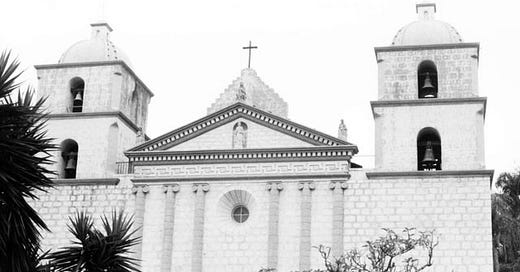Note: As we approach our 50th Episode, we're going to try something a little different: this journey will be a two-parter, so I can give you all the thrilling details of my California adventure. Enjoy!
Also note: I've made a "live" Google Map for my Temple Guy page that shows the missions of California and some associated sites. You can find it here.
--------
At some point in their lives, many Californians have dreamed of "doing the Mission Trail"--traveling to each of California's 21 Spanish missions along the El Camino Real, the "Royal Highway." I even belong to a group of over 1200 "Mission Walkers" on Facebook, people either finished with, in the process of, or dreaming (like me--though it'll be hard to do from my home in the Philippines) of walking the 600 or so miles from San Diego near the Mexican border to Sonoma north of San Francisco. But when I did the Mission Trail, it was the antithesis of "mission walking." Stay tuned for all the frantic details in this episode of--
TEMPLE TALES!




